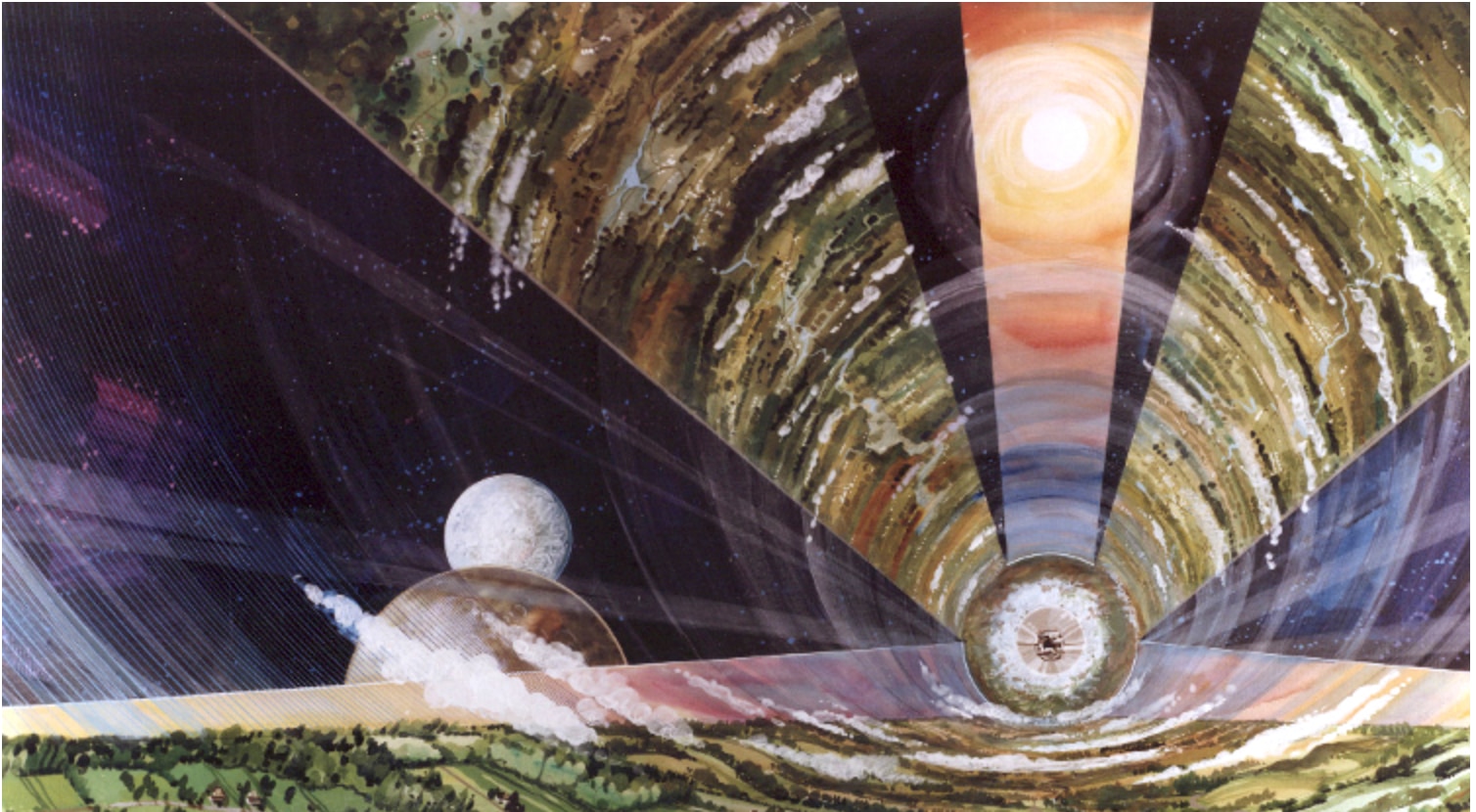Create a free profile to get unlimited access to exclusive videos, sweepstakes, and more!
Jeff Bezos wants us to live in space colonies that spin like cosmic kaleidoscopes

Now that Elon Musk has serious competition from Jeff Bezos’ new Blue Moon lunar lander, his vision of humans as an interplanetary species is up against the Amazon CEO’s own dream. Bezos isn’t looking at only using existing planets — he wants to build homes in space itself.
Planets that have already been floating around for billions of years could hold us back with lack of gravity and resources, not to mention killer radiation like the kind that is thought to have turned Mars into a frozen desert. At the Blue Moon reveal, Bezos instead declared that for his version of the future, he is looking back to an idea from the dawn of space exploration. This idea (if it happens) is going to turn us into the Jetsons. Sort of.
That trippy kaleidoscopic concept you’re seeing above was originally the brainchild of Princeton physicist Gerard O’Neill in the ‘70s. What came to be called O’Neill colonies are immense circular structures (which can hold thousands to even millions of people) that rotate in space, because the centrifugal force creates a sort of artificial gravity so things aren’t just randomly floating. These are basically giant ant colonies, except with humans, that bottle up all the best parts of Earth.
“If we move out into the solar system, for all practical purposes, we have unlimited resources,” Bezos said, though some opinions might challenge that. “We could have a trillion people out in the solar system.”
O’Neill didn’t see us sitting in a tin can (sorry David Bowie). The colonies are supposed to be made of a transparent material much like glass. They are also imagined to be self-sustaining, which is a major plus during an era when “sustainable” is one of the buzzwords for off-Earth living. Solar power would provide unlimited energy to keep the electricity on and grow crops, which is where clear walls that let light in become absolutely necessary, besides giving anyone living there a surreal view of space.
NASA would support this kind of sustainability. For missions to the moon and Mars in the much nearer future, the space agency means to use as many resources from space as possible, whether that be actual lunar or Martian material or asteroid stuff. Oxygen, nitrogen and aluminum are just some of the raw materials right there in the cosmos. Moon water exists. Using what is right under our moon boots will eliminate the need for expensive resupply missions from Earth. Never mind that Earth is already gasping in panic from how fast its resources are being depleted by our species.
While O’Neill colonies like those in Star Trek and Interstellar aren’t going to be a thing anytime soon, probably not even in our lifetime, dreaming the impossible is a prerequisite when it comes to space.
(via Astronomy.com)














